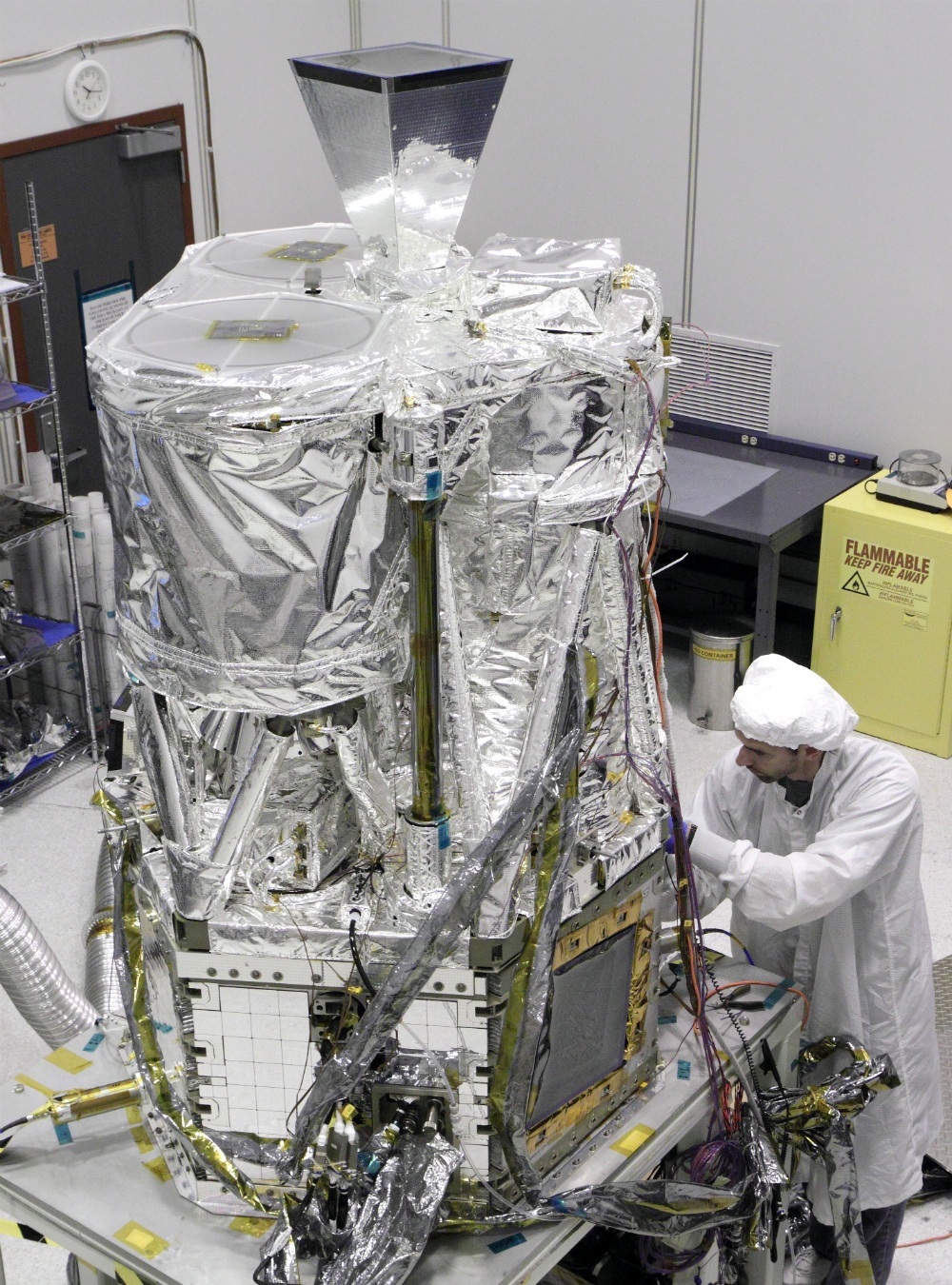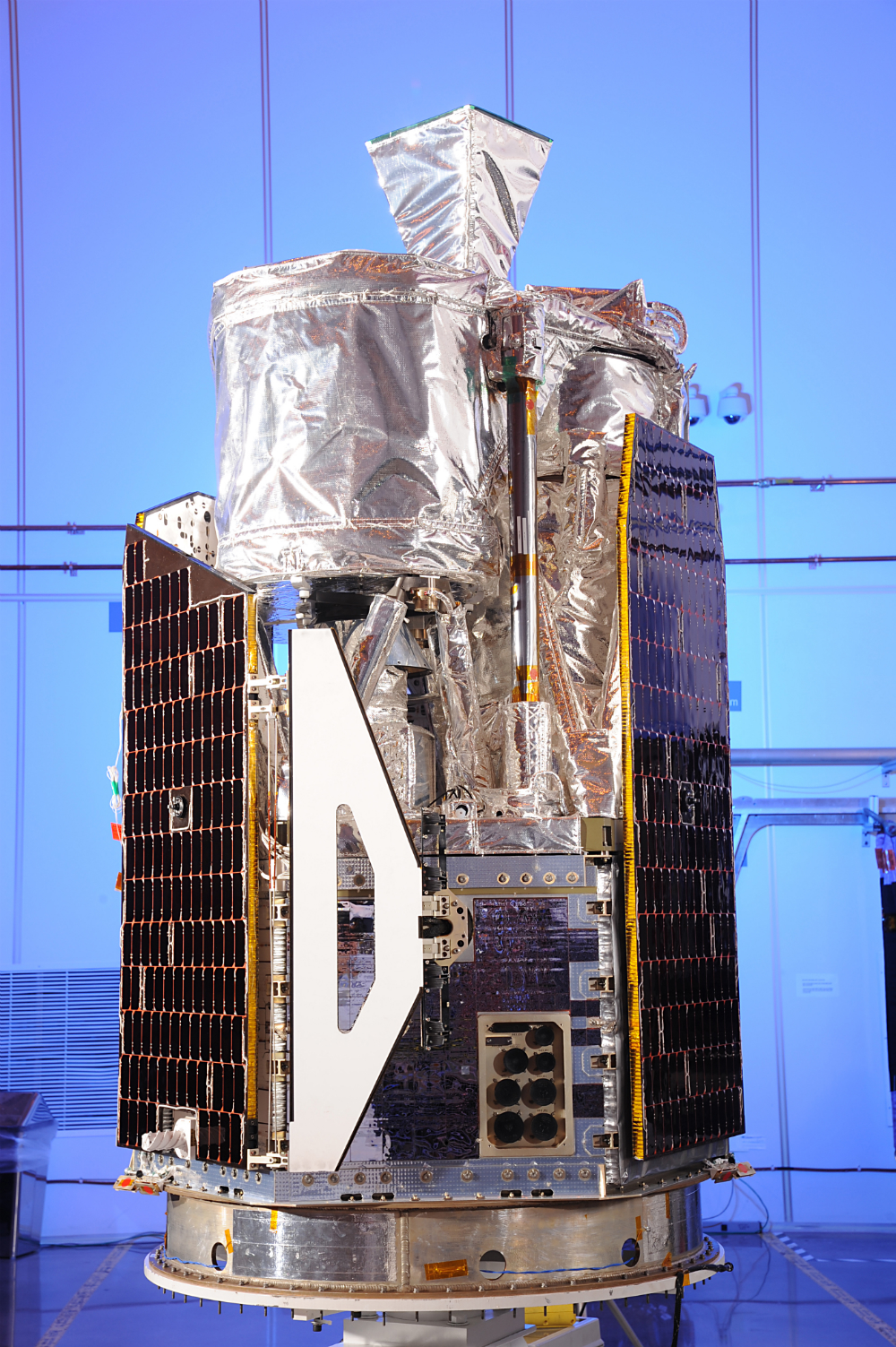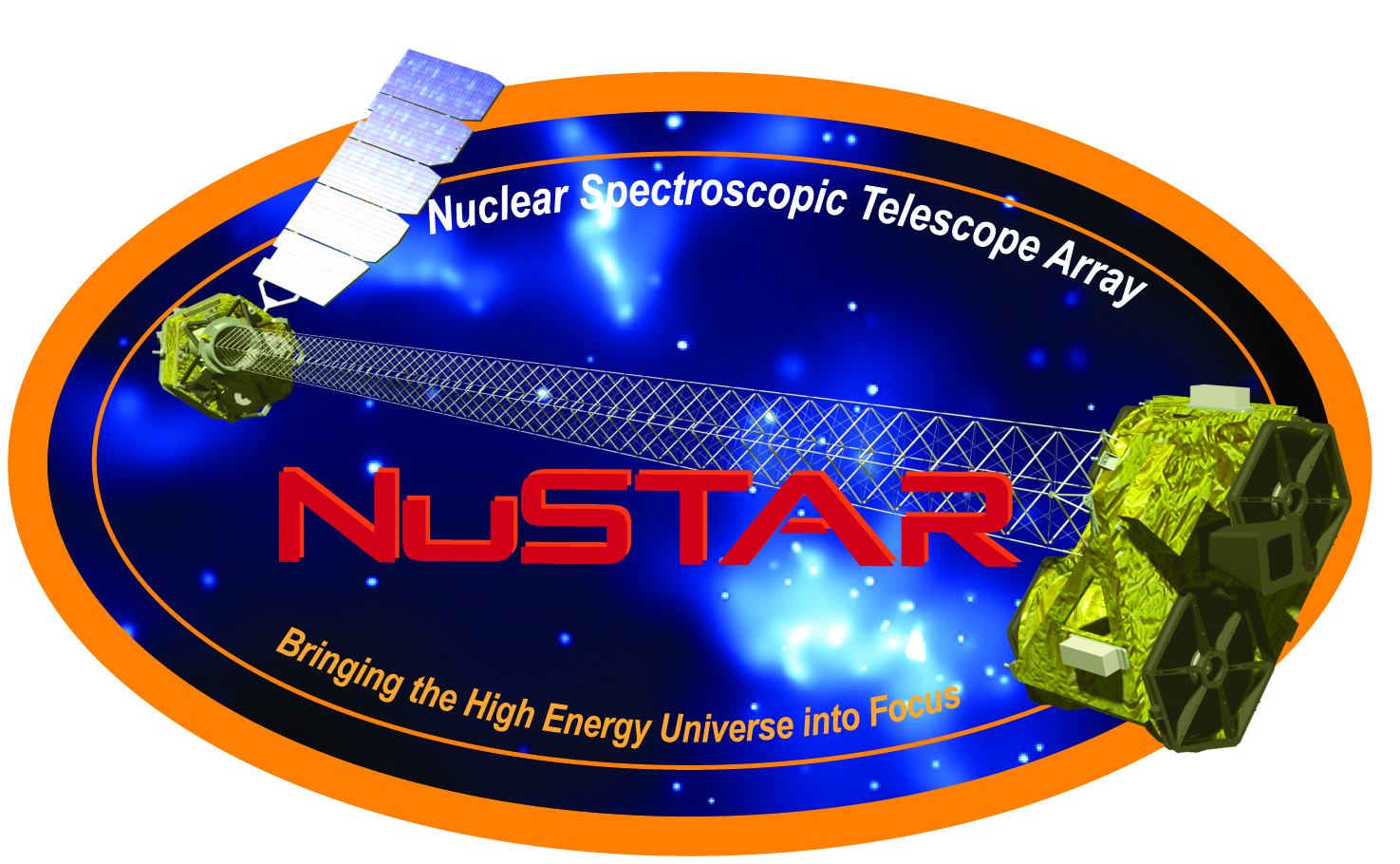Gallery: NuSTAR, NASA's Black Hole Hunting Space Telescope
Stowed Mast
Essential to the NuSTAR design is a deployable mast which extends to 10 meters (30 feet) after launch. This mast will separate the NuSTAR X-ray optics from the detectors, a necessity to achieve the long focal length required by the optics design. The mission's launch is now scheduled for no earlier than March 21, 2012.
NuSTAR at OSC
The integrated NuSTAR observatory, including the instrument and spacecraft, at Orbital Sciences Corporation (OSC) in Dulles, Virginia on June 29, 2011. The observatory is being prepared for environmental testing, including testing in a thermal vacuum chamber and vibration testing. The mission's launch is now scheduled for no earlier than March 21, 2012.
NuSTAR at OSC, Jan. 2012
The integrated NuSTAR observatory, including the instrument and spacecraft, at Orbital Sciences Corporation (OSC) in Dulles, Virginia in January 2012. The mission's launch is now scheduled for no earlier than March 21, 2012.
Slumped-Glass Optics
The NuSTAR glass optics are being shaped at the Goddard Space Flight Center (GSFC) mirror development lab, led by Will Zhang. The mission's launch is now scheduled for no earlier than March 21, 2012.
NuSTAR Unboxing
In the airlock at Vandenberg Air Force Base (VAFB) in California, NASA's Nuclear Spectroscopic Telescope Array (NuSTAR), wrapped in a protective shroud, comes into view as the environmentally controlled shipping container is lifted away from the spacecraft. The mission's launch is now scheduled for no earlier than March 21, 2012.
JPL Delivery
The integrated NuSTAR instrument, including optics modules, detectors and the stowed mast, at JPL on April 19, 2011. The mission's launch is now scheduled for no earlier than March 21, 2012.
NuSTAR with Pegasus Rocket
The transporter for the Orbital Sciences Pegasus XL rocket rolls into the sunlight outside Orbital’s hangar at Vandenberg Air Force Base in California. The rocket is mated to NASA's Nuclear Spectroscopic Telescope Array, or NuSTAR, encapsulated in the Pegasus payload fairing. The transporter will move them to the runway ramp where they will be attached to the underside of Orbital’s L-1011 carrier aircraft. The aircraft will fly the pair from Vandenberg to the Ronald Reagan Ballistic Missile Defense Test Site on the Pacific Ocean’s Kwajalein Atoll for launch. A revised launch date will be set at the Flight Readiness Review, planned for later this week. The high-energy X-ray telescope will conduct a census of black holes, map radioactive material in young supernovae remnants, and study the origins of cosmic rays and the extreme physics around collapsed stars.
Breaking space news, the latest updates on rocket launches, skywatching events and more!
NuSTAR Satellite
Computer graphic of what the NuSTAR satellite would look like, fully extended. The mission's launch is now scheduled for no earlier than March 21, 2012.
NuSTAR Sticker
NuSTAR will investigate the hottest regions in the universe, studying sources ranging from neutron stars to supernovae to black holes and the sun. Developed by an international team, this Small Explorer mission will launch no earlier than March 21, 2012, and spend at least two years observing the high energy universe.
NuSTAR's Final Checks
An Orbital Sciences technician completes final checks of NASA's Nuclear Spectroscopic Telescope Array, or NuSTAR, inside the Orbital Sciences processing facility at Vandenberg Air Force Base in California before the Pegasus payload fairing is secured around it. Image released March 2, 2012.

Space.com is the premier source of space exploration, innovation and astronomy news, chronicling (and celebrating) humanity's ongoing expansion across the final frontier. Originally founded in 1999, Space.com is, and always has been, the passion of writers and editors who are space fans and also trained journalists. Our current news team consists of Editor-in-Chief Tariq Malik; Editor Hanneke Weitering, Senior Space Writer Mike Wall; Senior Writer Meghan Bartels; Senior Writer Chelsea Gohd, Senior Writer Tereza Pultarova and Staff Writer Alexander Cox, focusing on e-commerce. Senior Producer Steve Spaleta oversees our space videos, with Diana Whitcroft as our Social Media Editor.










